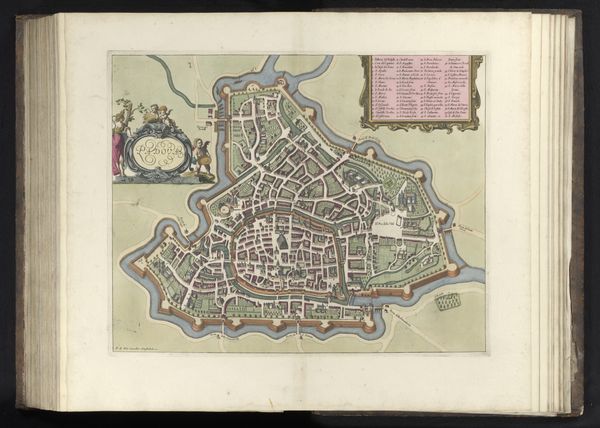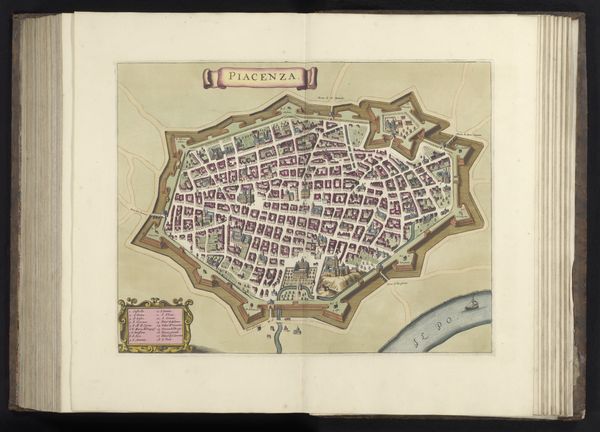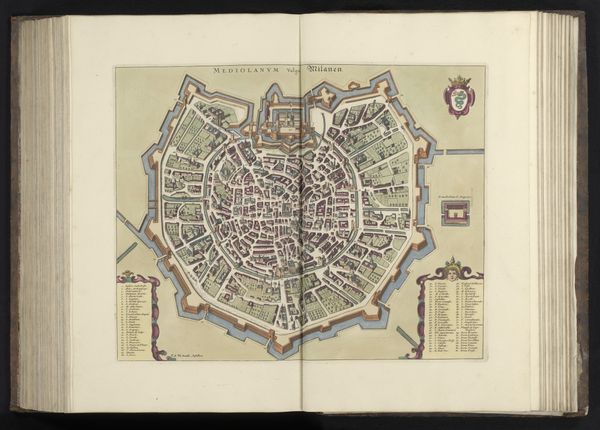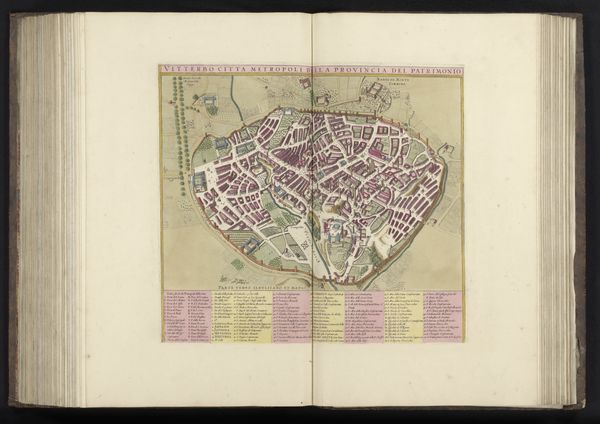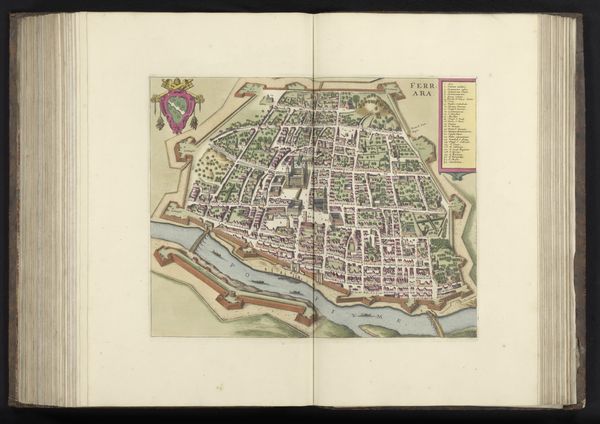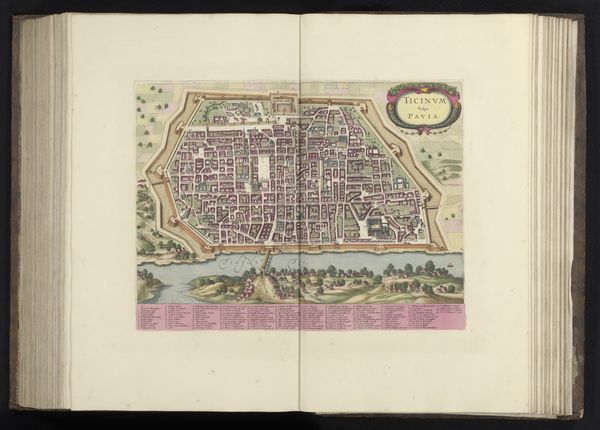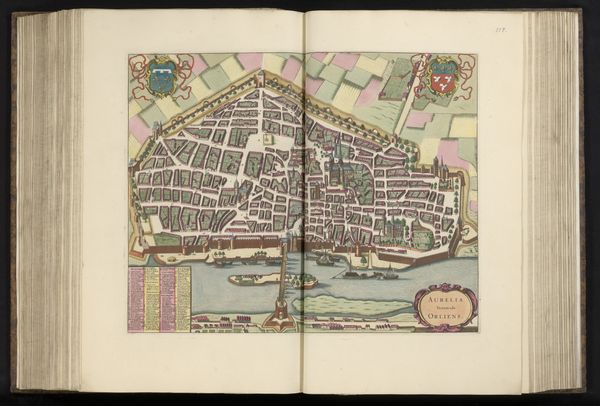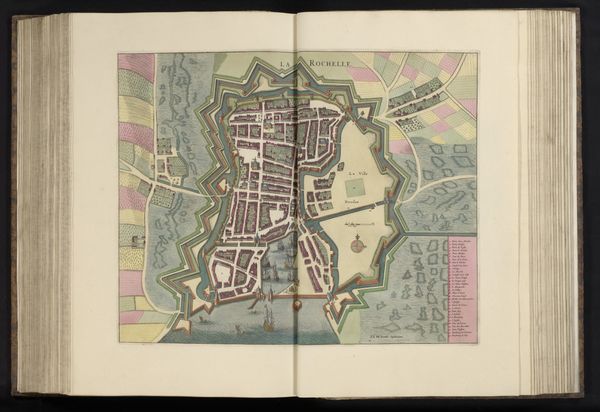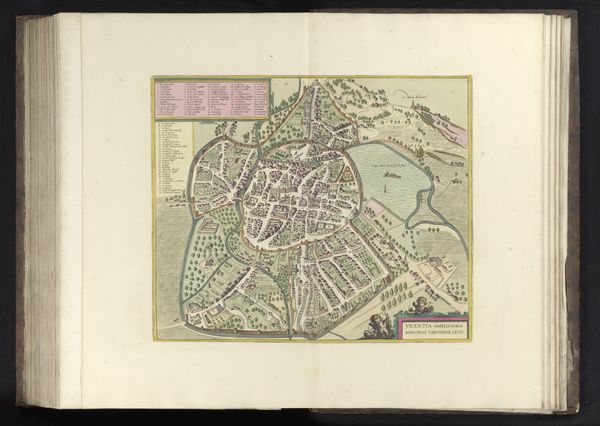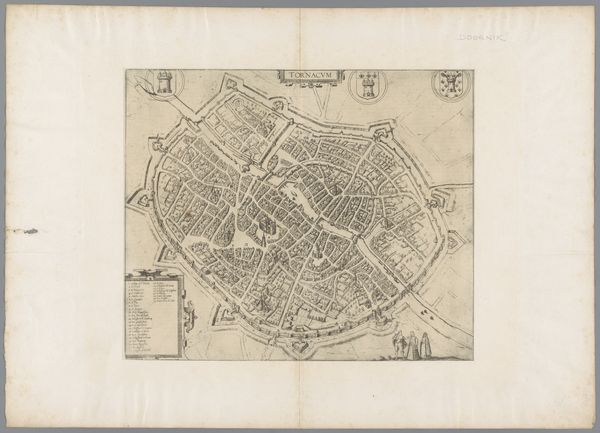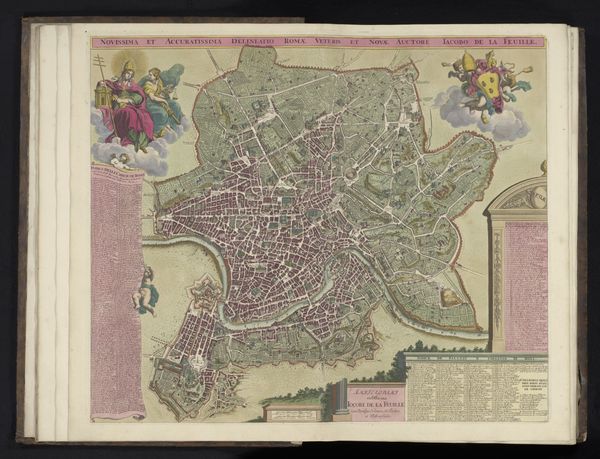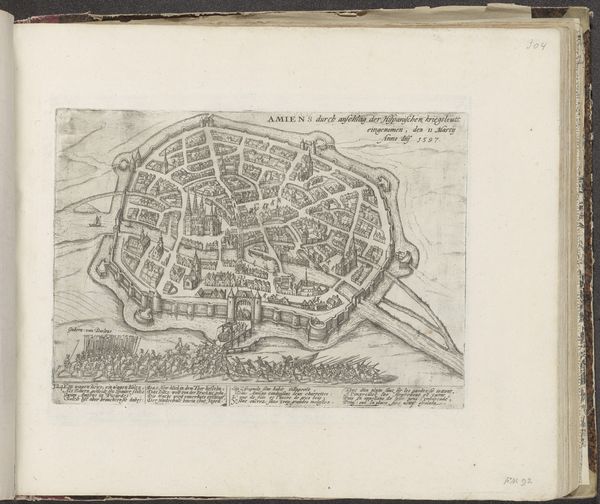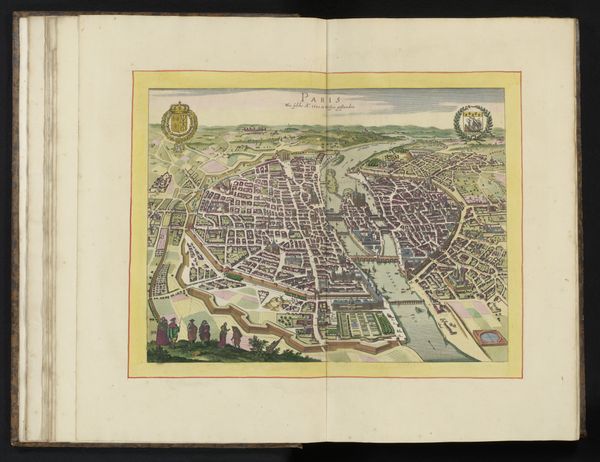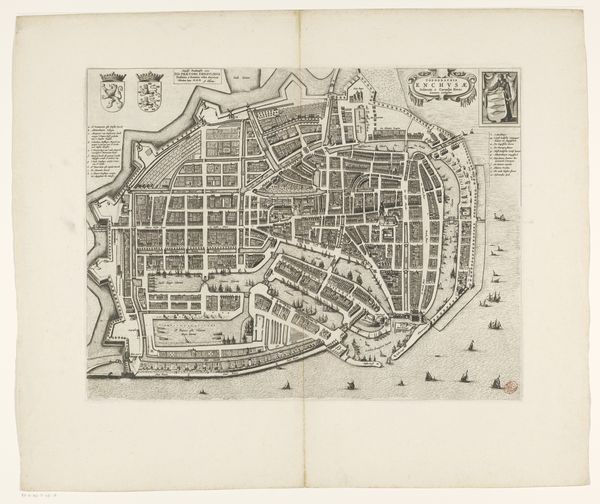
drawing, print, etching, paper, ink, engraving
#
drawing
#
aged paper
#
toned paper
#
baroque
#
ink paper printed
# print
#
etching
#
sketch book
#
perspective
#
paper
#
personal sketchbook
#
ink
#
ink colored
#
pen work
#
sketchbook drawing
#
cityscape
#
watercolour illustration
#
sketchbook art
#
engraving
Dimensions: height 413 mm, width 520 mm
Copyright: Rijks Museum: Open Domain
Editor: So, this print, "Gezicht op Parma in vogelvluchtperspectief," possibly from between 1639 and 1717, is a bird's-eye view of Parma rendered in ink and etching on paper. It's pretty detailed, almost architectural in its precision. What strikes me is how the city's defenses seem so integral to its form. How do you interpret the piece? Curator: The means of production is everything here. Consider the paper: its age, the texture. These materials weren't cheap. Their existence implies patronage, a consumer base eager for detailed cityscapes. The act of etching itself involved specialized labour; someone had to create the plates, another to print them. Notice also the strategic layout; these star-shaped fortifications didn’t just appear. They were the result of intense labour, resources, and military strategies shaping urban space. Editor: That's a really interesting point about the labor involved. I hadn't really considered the production aspect so much. It makes me wonder about the relationship between the artist and the city's rulers. Curator: Exactly! This wasn’t just art for art's sake. It's deeply embedded in the political and economic structures of the time. What message was this map meant to convey? The impenetrable defenses perhaps? A display of power through its infrastructure and clearly displayed fortifications. Editor: I suppose a piece like this, commissioned or not, really showcases not just the aesthetic qualities of Parma but also, implicitly, the political and economic conditions that allowed it to be built. It’s far more than just a pretty picture! Curator: Precisely. We are not just looking at lines on paper but at the culmination of material processes that underscore the story of Parma itself. That includes the social relations required to imagine, manufacture, and consume images like this.
Comments
No comments
Be the first to comment and join the conversation on the ultimate creative platform.
